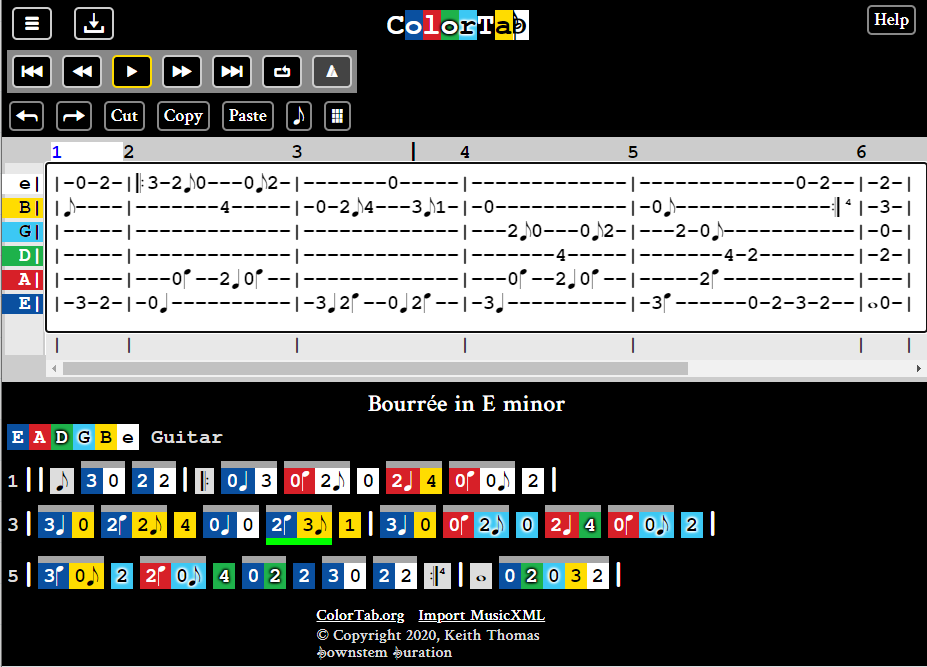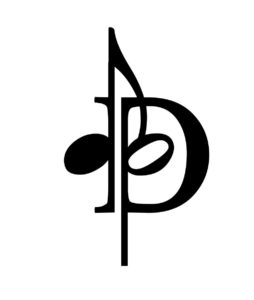Downstem Duration
Guitar can be played with some notes held longer and timed separately from others. Often this is bass notes on lower strings plucked separately from notes played on the higher strings. Staff notation can’t always shows this clearly but accurate playback requires it. A “let ring” instruction is usually all you get with tab. Timing and duration are usually of equal value, so that before the next note begins to sound, the previous note is ended. But duration beyond the start of the following note is often required. Lines with independent timing are called voices. Rather than add additional staves to support more voices, a common technique is to write notes with stems up for a first voice and down stem notes for a second voice. That allows two voices to be combined on a single stave like this:


ColorTab has a similar but much more flexible notation system that allows timing and duration to be separately specified for each note, effectively producing unlimited voices. Here is the same passage from Bach’s Bourrée in E minor. See and hear it play here.

There are too many details to fully explain in this blog post but this is called Downstem Duration because the note symbols with stems down are used only for duration. Up stems are the normal timing indication. These can be left out when a default up stem note is shown like the eighth note at the start. All notes are then eighths unless another note symbol changes it.
Gray overbars indicate chords in ColorTab and the low note is the default for the chord, but the timing and duration of each note can be different. A single up stem quarter note on the low string means both notes are quarter notes. A quarter note down stem extends the duration but keeps the default eighth timing. An up stem eighth on the upper chord note resets the duration.
